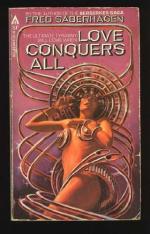On matters such as these the proletariat would have protested the Roman numeral long ago. If they are willing to let its reactionary use on tablets and monuments stand it is because of their indifference to influences which do not directly affect their pocketbooks. But if it could be put up to them in a powerful cartoon, showing the Architect and the Stone-Cutter dressed in frock coats and silk hats, with their pockets full of money, stepping on the Common People so that he cannot see what is written on the tablet behind them, then perhaps the public would realize how they are being imposed on.
For that there is an organized movement among architects and stone-cutters to keep these things from the citizenry there can no longer be any doubt. It is not only a matter of the Roman numerals. How about the use of the “V” when “U” should be used? You will always see it in inscriptions. “SVMNER BVILDING” is one of the least offensive. Perhaps the excuse is that “V” is more adapted to stone-lettering. Then why not carry this principle out further? Why not use the letter H when S is meant? Or substitute K for B? If the idea is to deceive, and to make it easier for the stone-cutter, a pleasing effect could be got from the inscription, “Erected in 1897 by the Society of Arts and Grafts”, by making it read: “EKEATEW IZ MXIXLXIXLXXII LY THE XNLIEZY OF AEXA ZNL ELAFTX.” There you have letters that are all adapted to stone-cutting; they look well together, and they are, in toto, as intelligible as most inscriptions.
XXVII
THE TOOTH, THE WHOLE TOOTH, AND NOTHING BUT THE TOOTH
Some well-known saying (it doesn’t make much difference what) is proved by the fact that everyone likes to talk about his experiences at the dentist’s. For years and years little articles like this have been written on the subject, little jokes like some that I shall presently make have been made, and people in general have been telling other people just what emotions they experience when they crawl into the old red plush guillotine.
They like to explain to each other how they feel when the dentist puts “that buzzer thing” against their bicuspids, and, if sufficiently pressed, they will describe their sensations on mouthing a rubber dam.
“I’ll tell you what I hate,” they will say with great relish, “when he takes that little nut-pick and begins to scrape. Ugh!”
“Oh, I’ll tell you what’s worse than that,” says the friend, not to be outdone, “when he is poking around careless-like, and strikes a nerve. Wow!”
And if there are more than two people at the experience-meeting, everyone will chip in and tell what he or she considers to be the worst phase of the dentist’s work, all present enjoying the narration hugely and none so much as the narrator who has suffered so.




